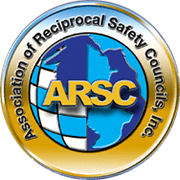By Trish Ennis CSP, ARM, CRIS
Executive Director, Colorado Safety Association
A recent study conducted and published by the National Institute of Occupational Safety & Health (NIOSH, October 7, 2021 https://www.cdc.gov/niosh/updates/upd-10-07-21.html) finds that more than 50% of workers who are exposed to noise on the job do not always, or even frequently wear hearing protection. This information may not be a surprise to the professionals who are tasked with enforcing occupational safety rules, but it is important information. Interestingly, non-compliance was highest among women, young workers, and smokers.
This study, which looked at 39,508 adult workers between 2007 and 2014 was consistent with past research, although this is the first time a connection has been made between smoking, and non-compliance with the use of hearing protection devices. It is to be noted that the data was collected for a period of time that concluded seven years ago and was finally published in 2021.
Hearing loss is a significant occupational safety and health exposure in many industries, including the petrochemical and construction industries. According to the Bureau of Labor Statistics, 14,500 workers experienced occupational hearing loss in 2019. That is 1.4 for every 10,000 workers. This number has come down from a high of 19,500, or 2.2 for every 10,000 workers in 2009.
Noise exposure is the primary risk factor for occupational hearing loss. 2019 NIOSH research indicates that about 61% of all workers in mining, and oil and gas extraction have been exposed to hazardous noise on the job. Not only does noise cause hearing loss, there is evidence that it is associated with high blood pressure and elevated cholesterol. Chemical exposures may also pose a risk to worker hearing in these sectors.
It is important to remember the hierarchy of control when evaluating a preventive approach to hearing loss. Elimination of the hazard is at the top of the hierarchy, followed by substitution (i.e. purchasing quieter tools and equipment) while personal protective equipment (PPE) and administrative controls are at the bottom of the hierarchy. Although it is mentioned in the hierarchy PPE is not considered a control, it is a protective device for an uncontrolled hazard and thus should be the last in the line of defense.
Training programs should be geared at educating workers of the risks of hearing damage and the hearing loss that can result. In particular, workers need to understand that:
- Hearing loss does not just affect the old
- Hearing loss is irreversible. Once the sensitive hair cells in the inner ear are damaged, they may not be able to recover, resulting in permanent damage and reduced hearing
- Hearing loss is cumulative – exposure over long periods of time can increase the damage
- Hearing loss is not inevitable
- Understanding options
- Proper use of hearing protection
- Understanding noise exposures
- On and off the job noise exposure
Audiometric testing and annual training are required by the Occupational Safety and Health Administration (OSHA) for organizations that have workers exposed to noise levels above prescribed limits. The information can be found here: https://www.osha.gov/laws-regs/regulations/standardnumber/1910/1910.95
- In general, the threshold allows for exposure to up to 115 dBA for 1/4 hour or less per day, ranging up to an 8-hour exposure of up to 90 dBA.
- The requirement to have a comprehensive hearing conservation program is triggered by workplace exposures starting at 85 dBA.
The standard is complex, so employers should conduct noise monitoring and develop programs based on the actual exposure in the workplace. Understanding the noise exposure in the workplace will provide employers with the information needed to create an effective program.
